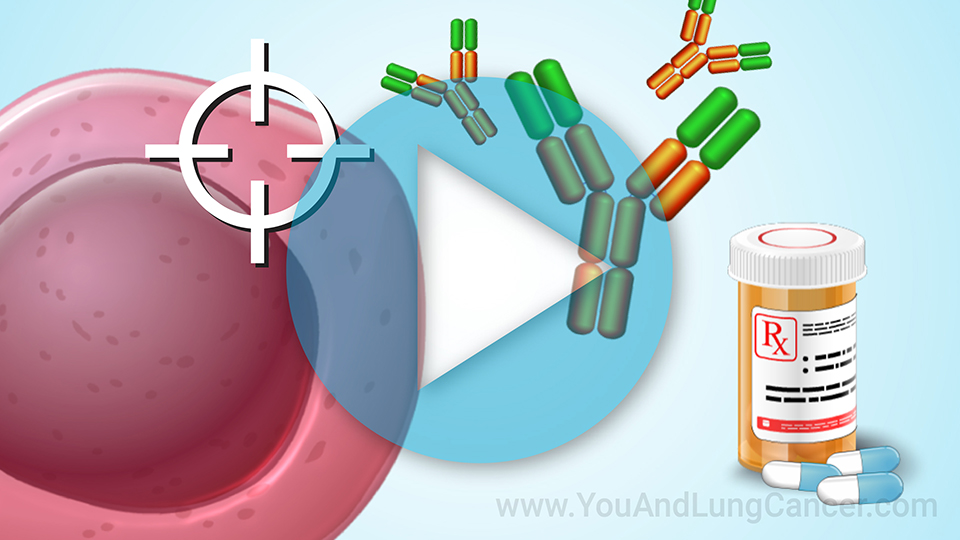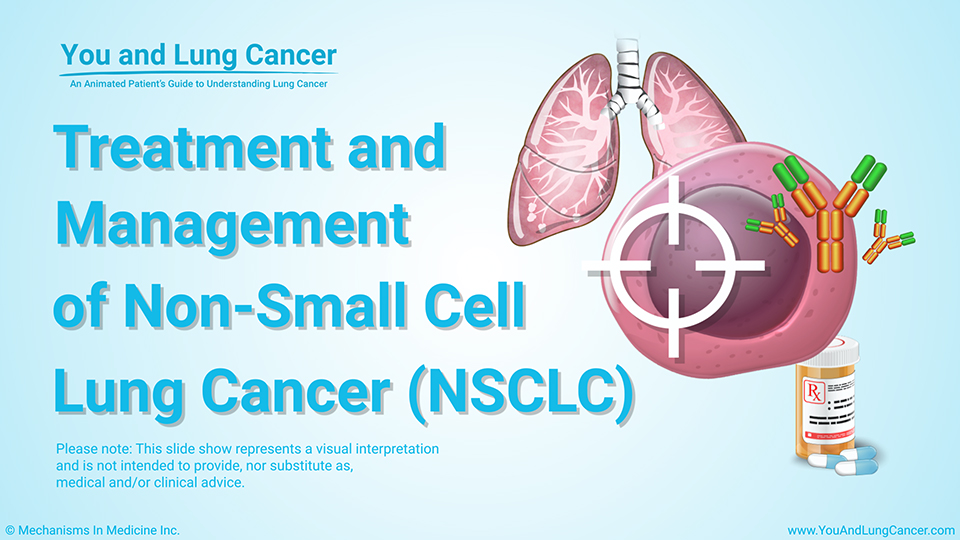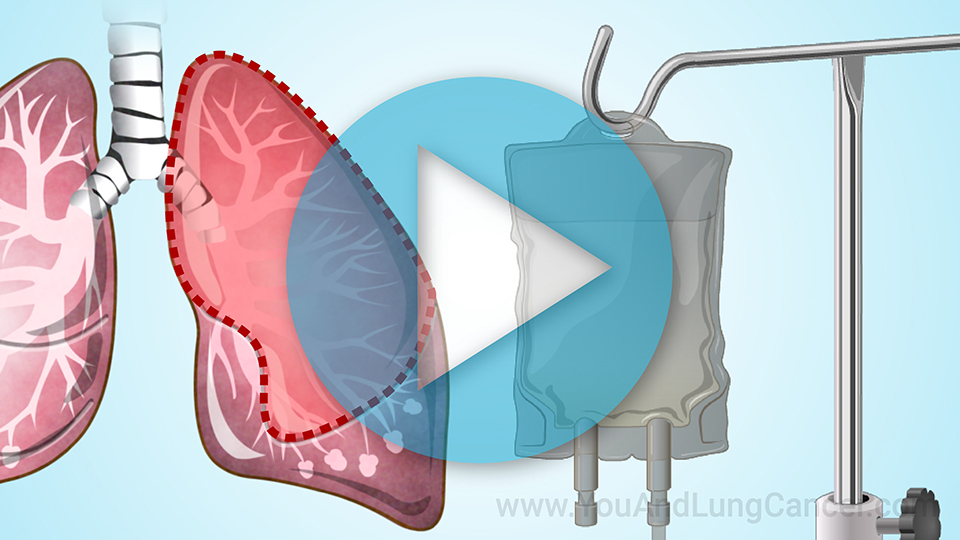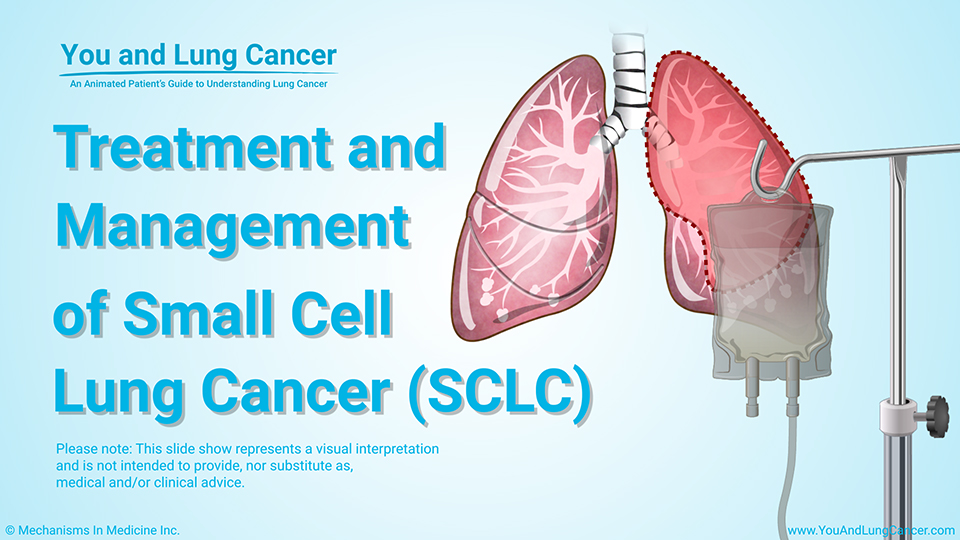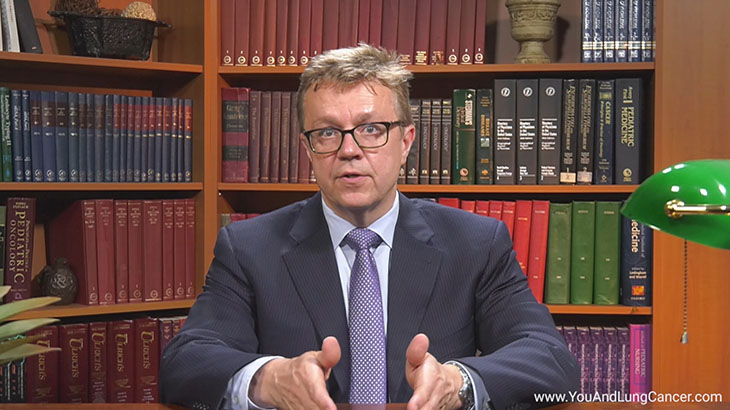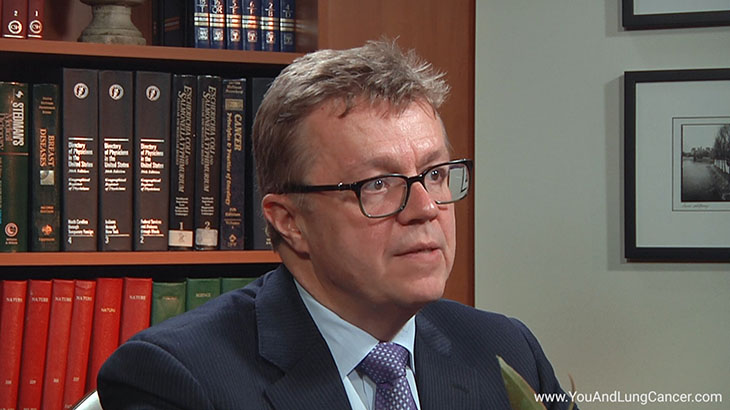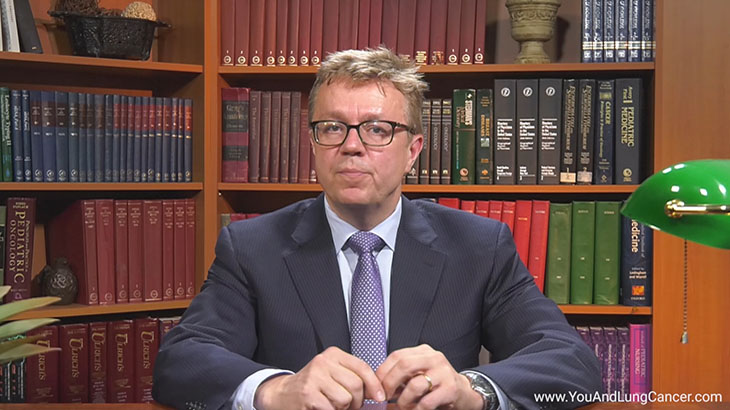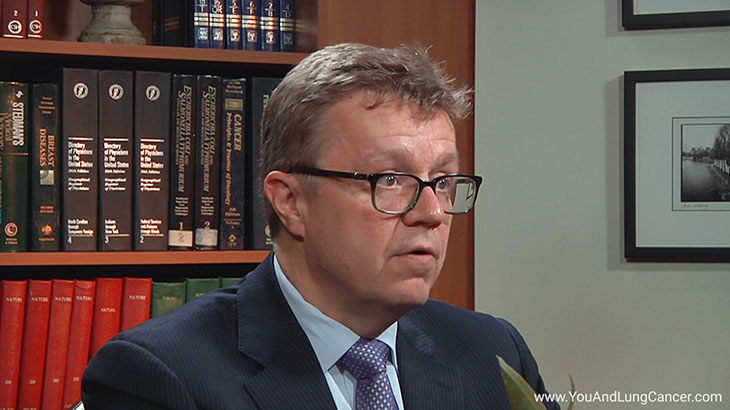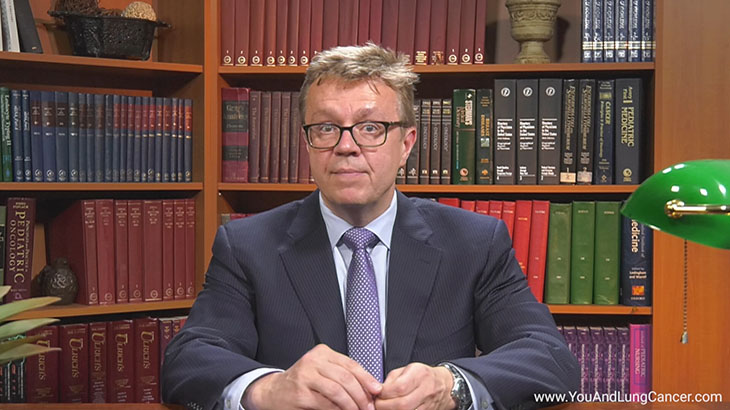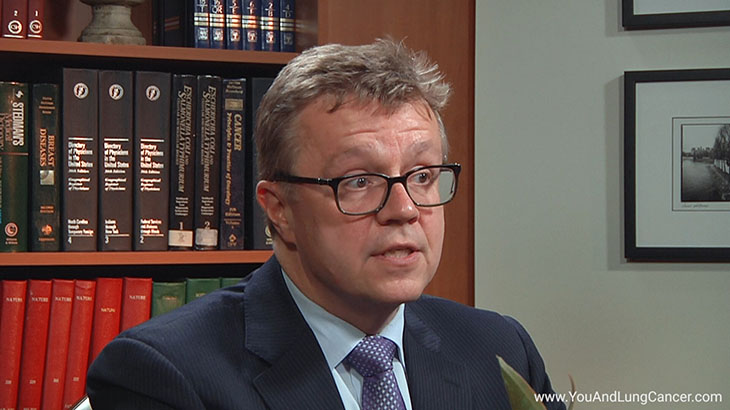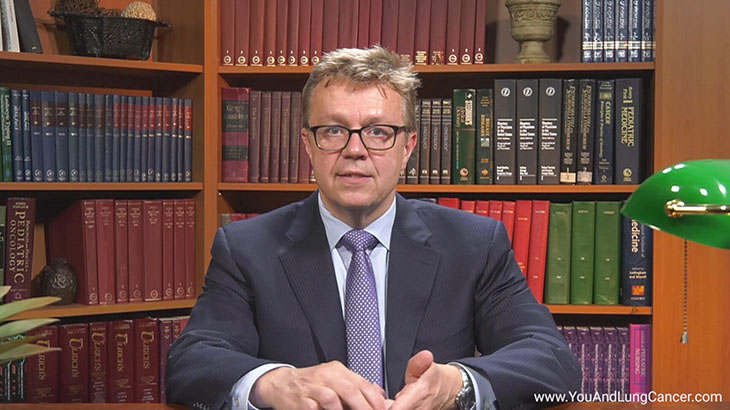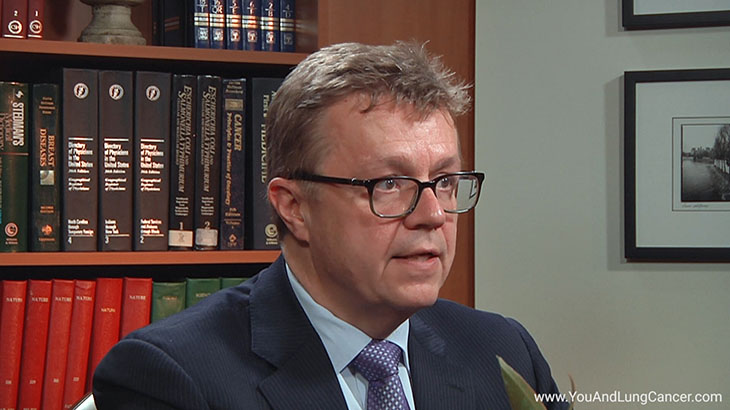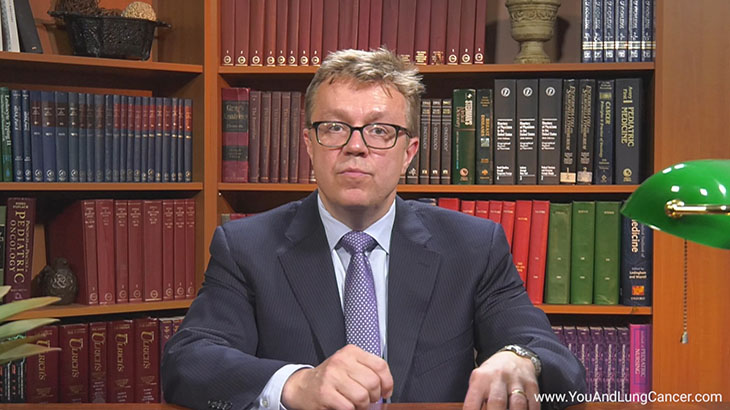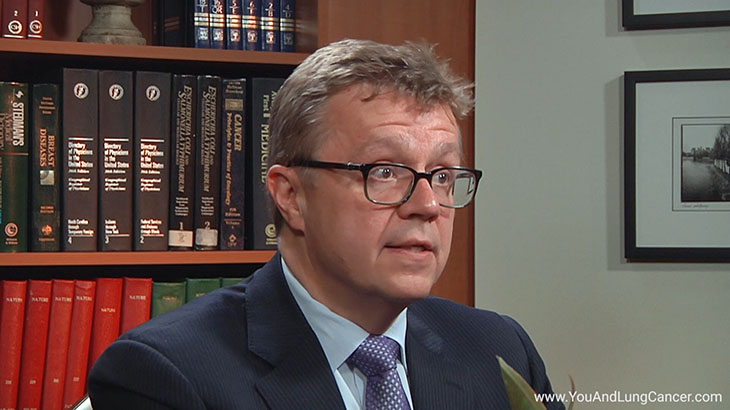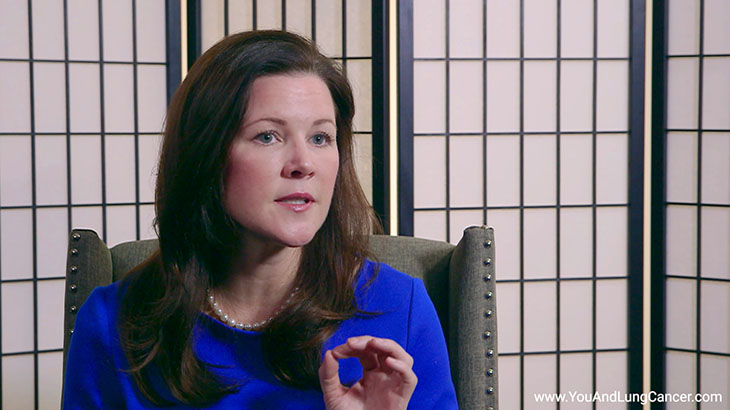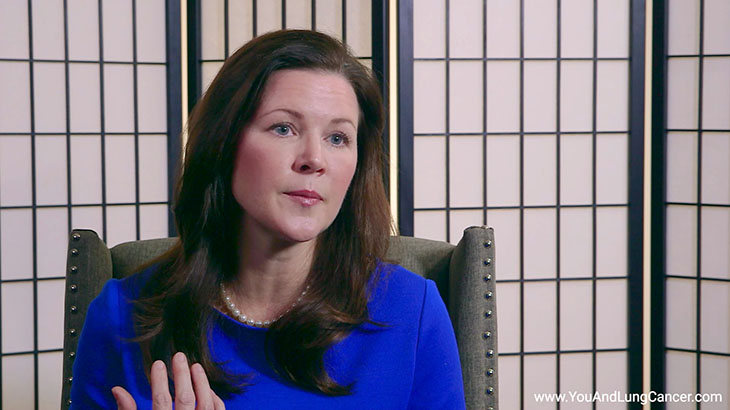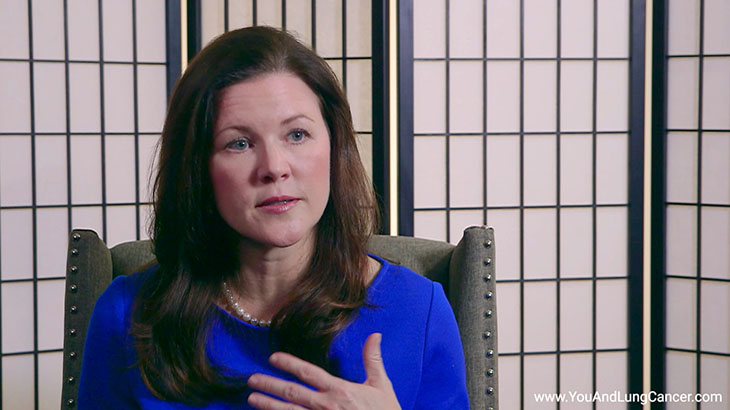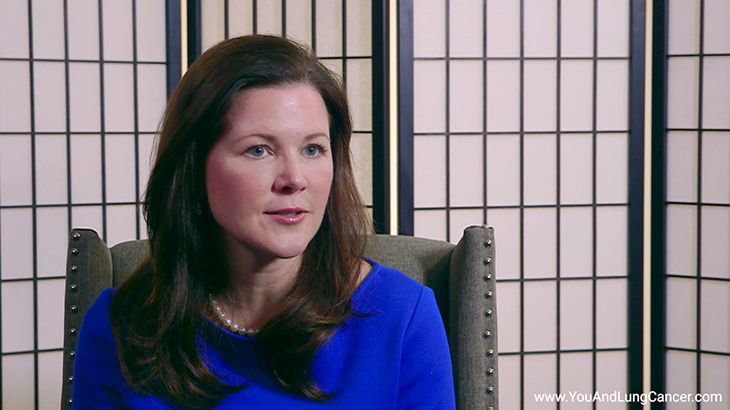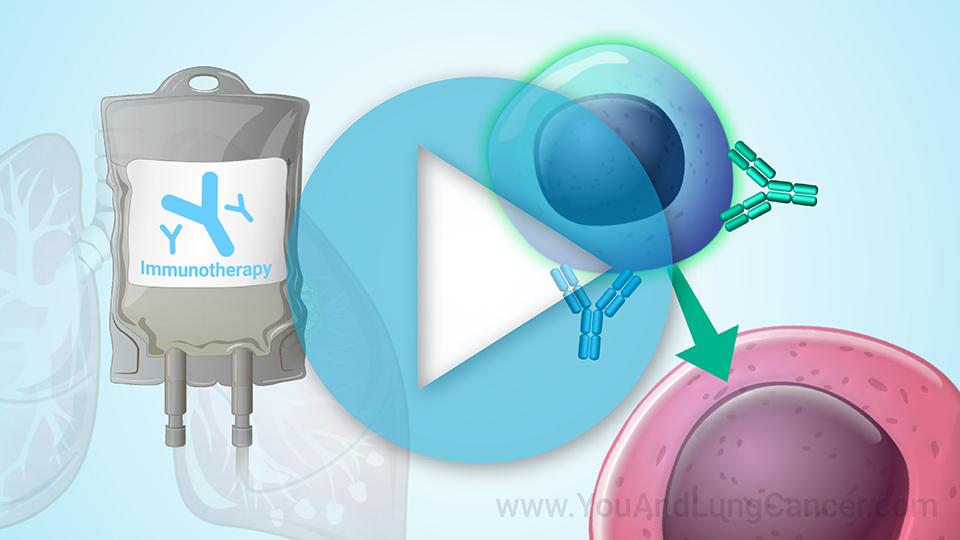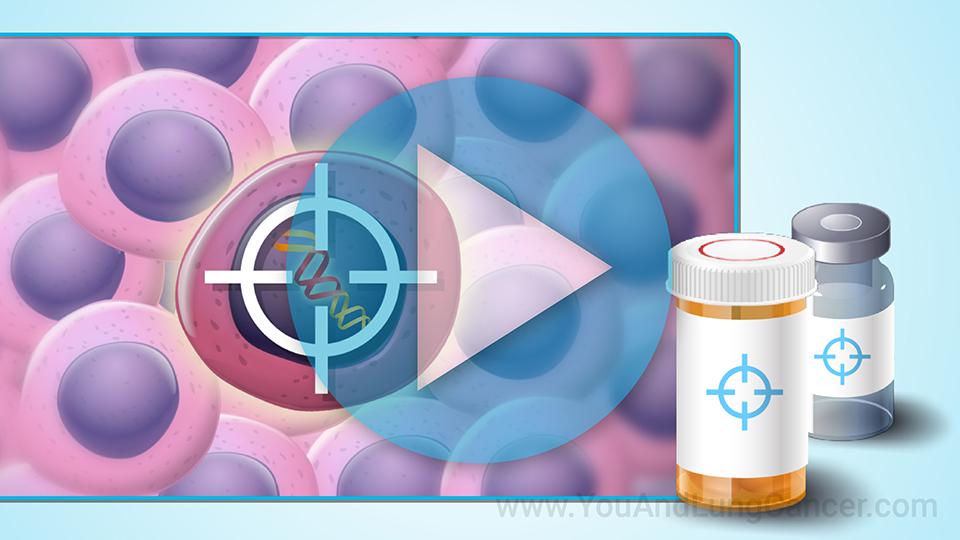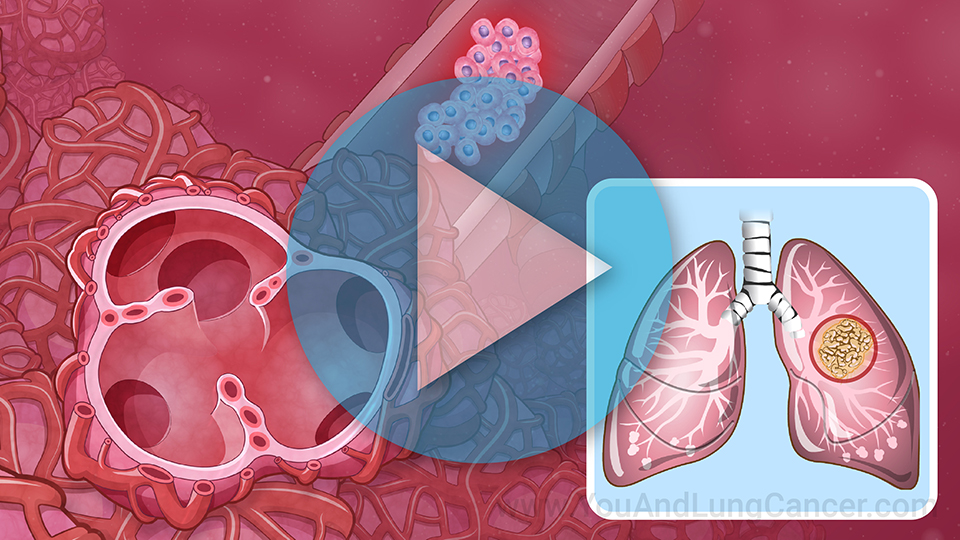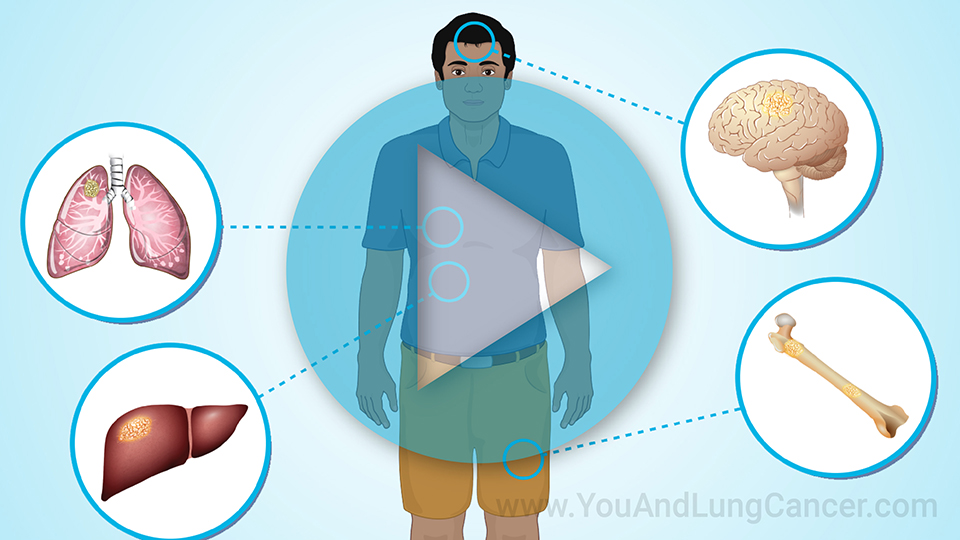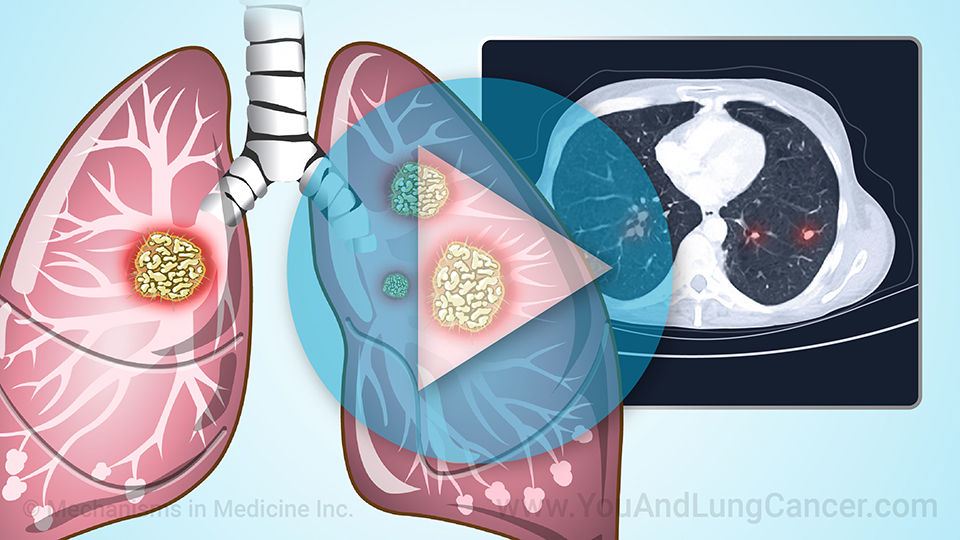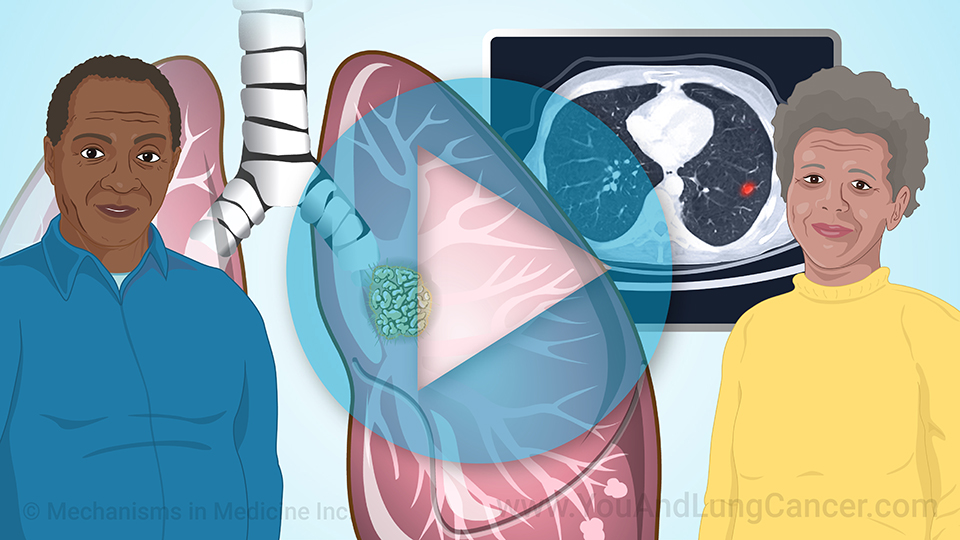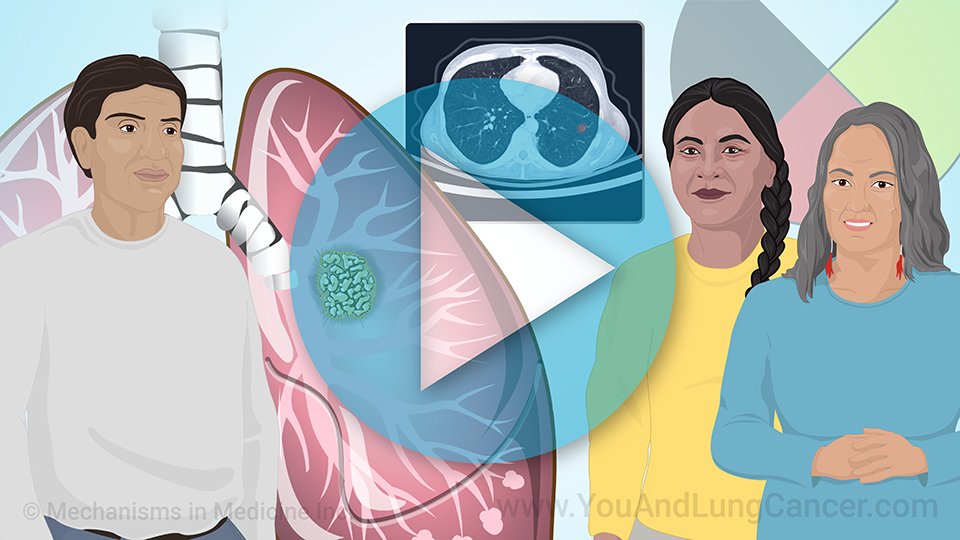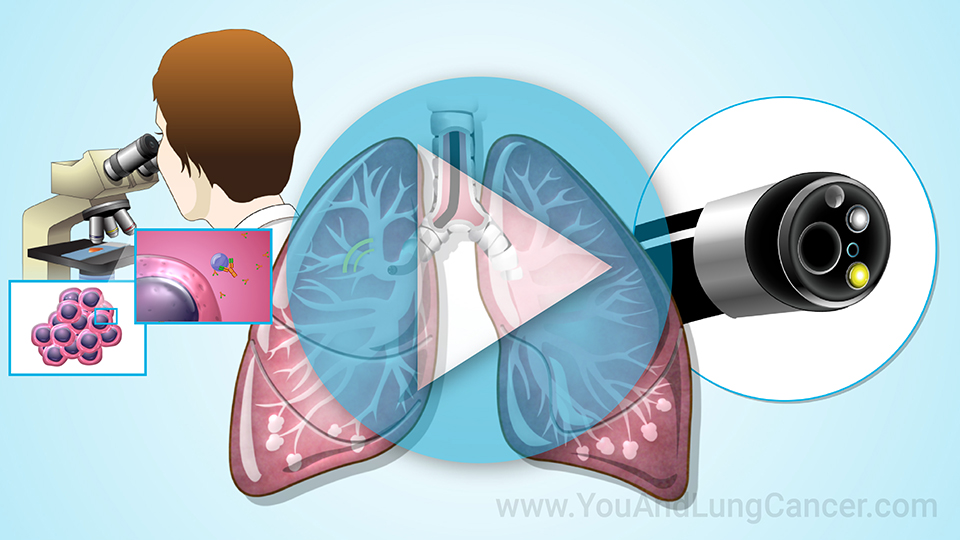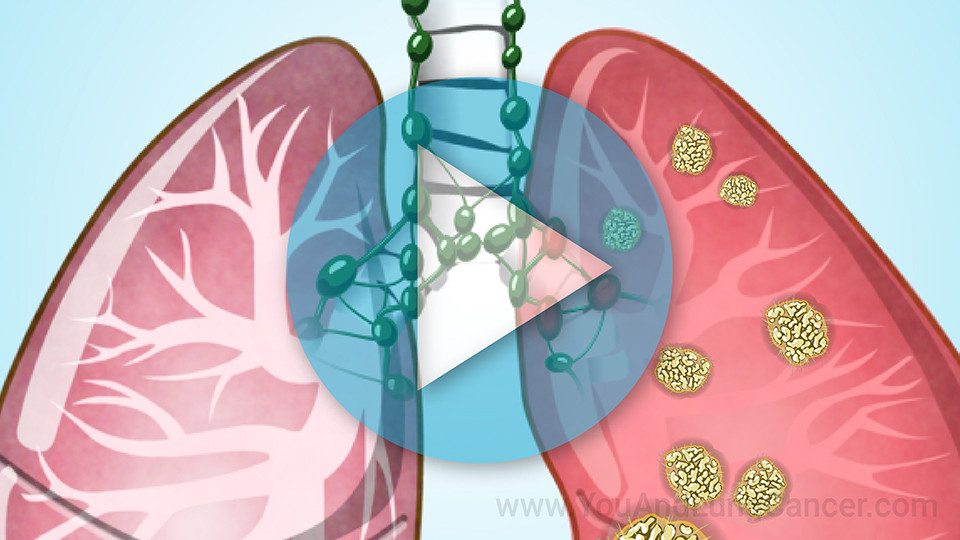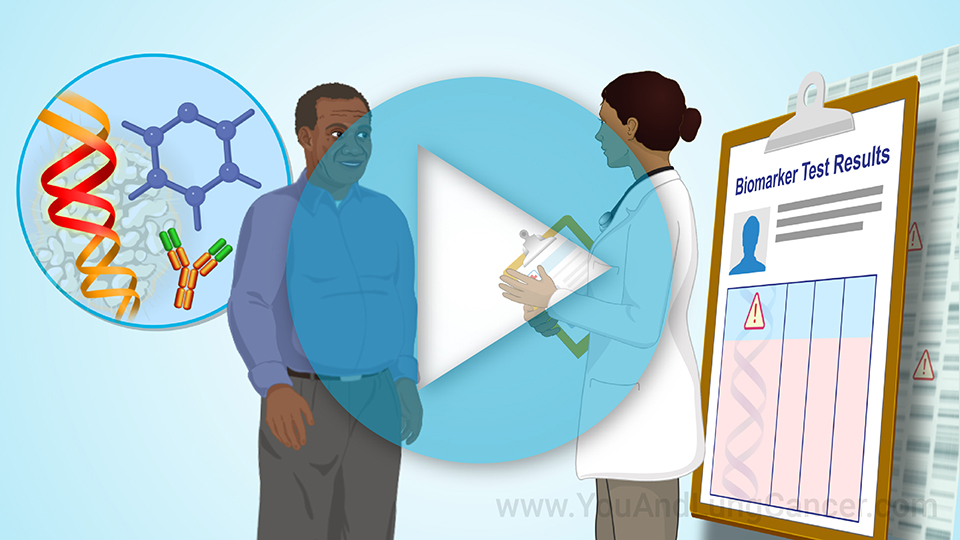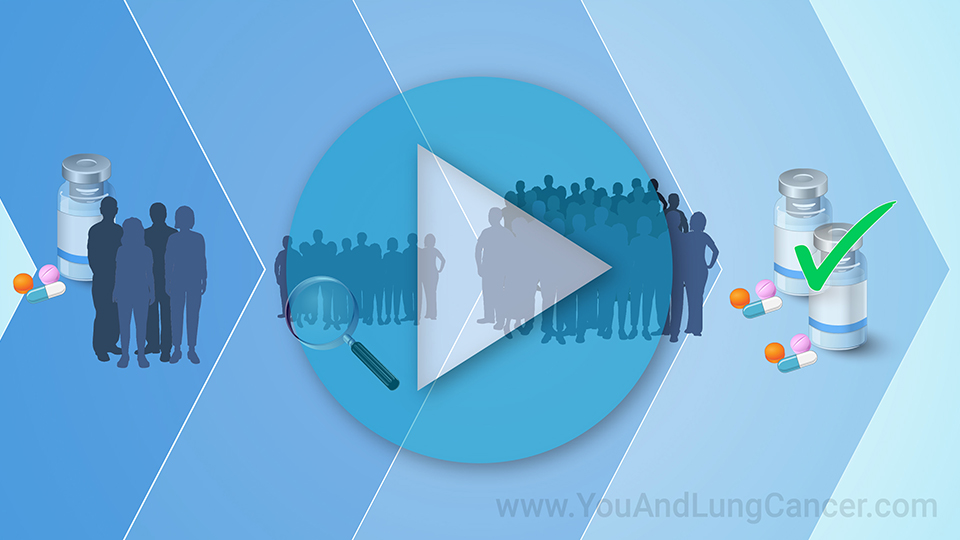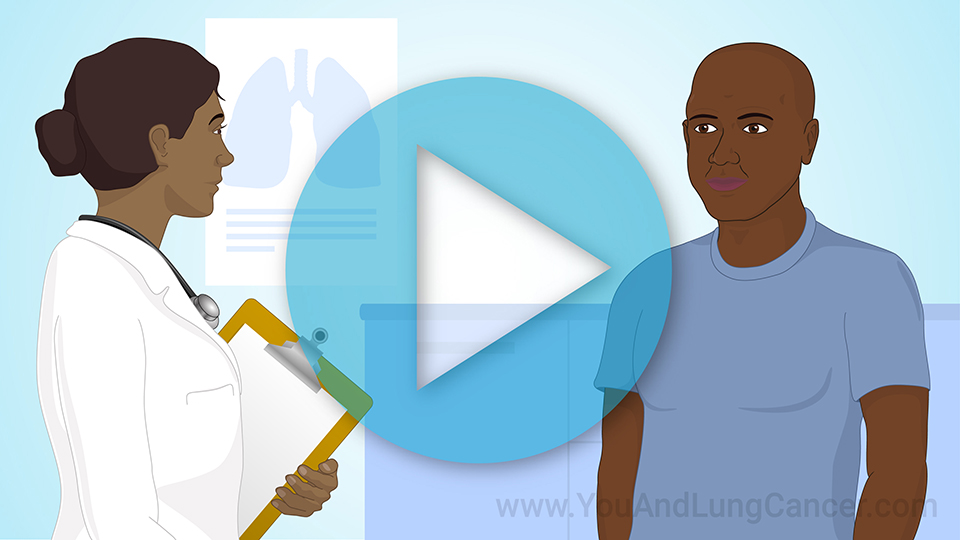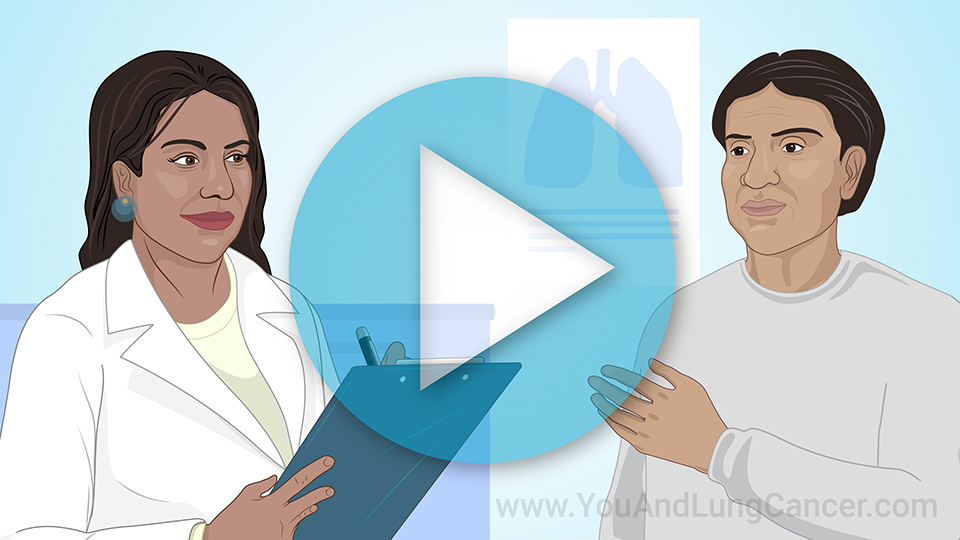Treatment and Management of Non-Small Cell Lung Cancer (NSCLC)
*Please note: This slide show represents a visual interpretation and is not intended to provide, nor substitute as, medical and/or clinical advice.
How is non-small cell lung cancer treated?
Most patients with NSCLC are treated with surgery, radiation therapy, or drug therapy. Most patients will undergo more than 1 type of treatment.
Other forms of care include:
- Supportive care to ease pain and discomfort; prevent and treat side effects; help you deal with stress and anxiety; and to help you stop smoking; and
- Palliative care is also important to ease symptoms and improve quality of life.
Types of surgery used to treat patients with NSCLC
Depending on how far the cancer has spread, treatment involving surgery may result in the removal of:
- Part of a lung lobe (called a segmentectomy or wedge resection);
- An entire lobe (called a lobectomy); or
- The whole lung (called a pneumonectomy).
Types of radiation therapy used to treat patients with NSCLC
Radiation therapy (or radiotherapy) uses high doses of radiation to kill or slow down the growth of cancer cells and shrink tumors. The 2 main types of radiation therapy are:
- External beam radiation therapy; and
- Internal radiation therapy.
Types of drug therapies used to treat patients with NSCLC
The main types of drug therapies used to treat patients with NSCLC are:
- Chemotherapy (or "chemo");
- Targeted therapy; and
- Immunotherapy.
What is chemotherapy?
Chemotherapy drugs kill cancer cells, which grow more quickly than healthy cells.
What are targeted therapies?
Targeted therapies attack specific changes in cancer cells that make them different from healthy cells. Many of these drugs are used only in patients whose tumors test positive for the drug target.
Types of targeted therapies used to treat patients with NSCLC
The 2 main types of targeted therapies are:
- Monoclonal antibodies that target changes on the surface of cancer cells. These drugs are given through an intravenous (or IV) line; and
- Small-molecule inhibitors that target changes inside cancer cells. These drugs come as pills that you take once or twice a day.
What are immunotherapies?
Immunotherapies work by boosting the power of the immune system to fight cancer. The immune system helps your body fight off infections and other diseases.
It is made up of white blood cells, the bone marrow, spleen, thymus, tonsils, lymph nodes, and lymph vessels (thin tubes that carry lymph and white blood cells all over the body).
Choosing among the various treatment options
As a patient, your treatment choices will depend on your cancer type, stage, symptoms, biomarkers, overall health, and other factors.
Choosing among the various treatment options
Plan your treatment with your doctors and make sure to:
- Ask questions (such as, "How will this drug help me?" and "What are its possible side effects?");
- Explain your worries, goals, and preferences;
- Get a second opinion; and
- Ask about clinical trials for your situation.
Treatment options for patients with Stage 0 NSCLC
Lung cancer is classified into several stages. The higher the stage, the more advanced the spread of the disease.
Treatment options for patients with Stage 0 NSCLC include:
- Surgery;
- Photodynamic therapy, electrocautery, cryosurgery, or laser surgery if the tumor can’t be removed by surgery because it’s in or near the windpipe (or trachea).
Treatment options for patients with Stage I NSCLC
Treatment options for patients with Stage I NSCLC include:
- Surgery (sometimes followed by chemotherapy or radiation therapy);
- Radiation therapy by itself for people who can’t have surgery or don’t want to have surgery; and
- Clinical trials.
Treatment options for patients with Stage II NSCLC
Treatment options for patients with Stage II NSCLC include:
- Surgery;
- Chemo before or after surgery;
- Radiation therapy for people who can’t or don’t want to have surgery; and
- Clinical trials.
Treatment options for patients with Stage IIIA NSCLC
Treatment options for patients with Stage IIIA NSCLC varies depending on whether or not the cancer can be surgically removed.
For people with tumors that can be surgically removed, options include:
- Chemo and/or radiation therapy before or after surgery; and
- Clinical trials.
For people with tumors that
can’t be surgically removed, options include:
- Chemo and radiation therapy (given during the same time period or one after the other);
- Radiation therapy; and
- Clinical trials.
Treatment options for patients with Stage IIIB NSCLC
Treatment options for patients with Stage IIIB NSCLC include:
- Chemo and radiation therapy (given during the same time period or one after the other);
- Chemo followed by surgery;
- Radiation therapy; and
- Clinical trials.
Treatment options for patients with Stage IV NSCLC (metastatic)
Treatment options for patients with Stage IV NSCLC include:
- Chemo;
- Targeted therapy;
- Immunotherapy;
- Radiation therapy; and
- Clinical trials.
Surgery is typically not an option with Stage IV NSCLC.
Potential side effects of NSCLC treatments
Treatments for NSCLC can cause side effects such as hair loss, poor appetite, nausea, vomiting, diarrhea or constipation, and increased chance of infection. Although not every patient gets side effects, your doctor or nurse will teach you how to prevent and manage them.
Will these treatments increase my survival?
While some treatments might make you feel better – for example by easing pain or making it easier to breathe – other treatments may help you live longer.
The benefits of joining a clinical trial
If you choose to join a clinical trial for lung cancer:
- You will receive the best standard treatment available for your condition;
- You may get access to a new treatment that is not available outside of the clinical trial;
- You might benefit from the extra care and attention provided by the clinical trial staff; and
- You will know that you helped contribute towards advancing lung cancer treatment.
This slide show explains how most patients with NSCLC are treated more than 1 type of treatment. That can include with surgery, radiation therapy, or drug therapy. In various stages of lung cancer, there are also supportive treatments to ease pain and discomfort; prevent and treat side effects; help you deal with stress and anxiety; and if you have not already done so, to help you stop smoking. Palliative treatments also exist to ease symptoms and improve quality of life.
-
Share with family and friends:
Click here to take our SURVEY
Your feedback is important to us! We will use your feedback to develop future areas of content about lung cancer which will help other patients, caregivers and families.
